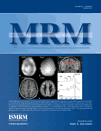In vivo evaluation and proof of radiofrequency safety of a novel diagnostic MR-electrophysiology catheter†
Parts of this work have been presented on the ISMRM 2007 in Berlin and the interventional MRI Symposium 2008 in Baltimore.
Abstract
An MR-electrophysiology (EP) catheter is presented that provides full diagnostic EP functionality and a high level of radiofrequency safety achieved by custom-designed transmission lines. Highly resistive wires transmit intracardiac electrograms and currents for intracardiac pacing. A transformer cable transmits the localization signal of a tip coil. Specific absorption rate simulations and temperature measurements at 1.5 T demonstrate that a wire resistance > 3 kΩ/m limits dielectric heating to a physiologically irrelevant level. Additional wires do not increase tip specific absorption rate significantly, which is important because some clinical catheters require up to 20 electrodes. It is further demonstrated that radiofrequency-induced and pacing-induced resistive heating of the wires is negligible under clinical conditions. The MR-EP catheters provided uncompromised recording of electrograms and cardiac pacing in combination with a standard EP recorder in MR-guided in vivo EP studies, and the tip coil enabled fast and robust catheter localization. In vivo temperature measurements during such a study did not detect any device-related heating, which confirms the high level of safety of the catheter, whereas unacceptable heating was found with a standard EP catheter. The presented concept for the first time enables catheters with full diagnostic EP functionality and active tracking and at the same time a sufficient level of radiofrequency safety for MRI without specific absorption rate-related limitations. Magn Reson Med, 2011. © 2010 Wiley-Liss, Inc.




